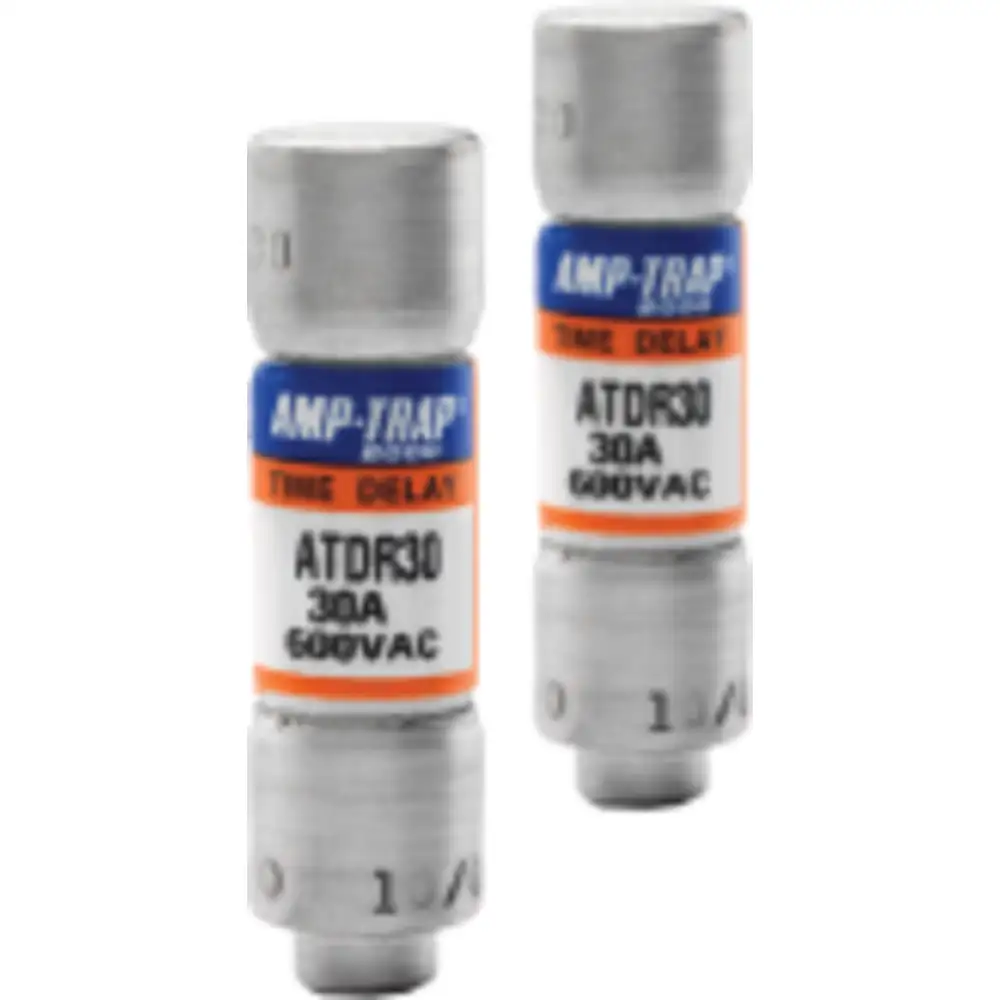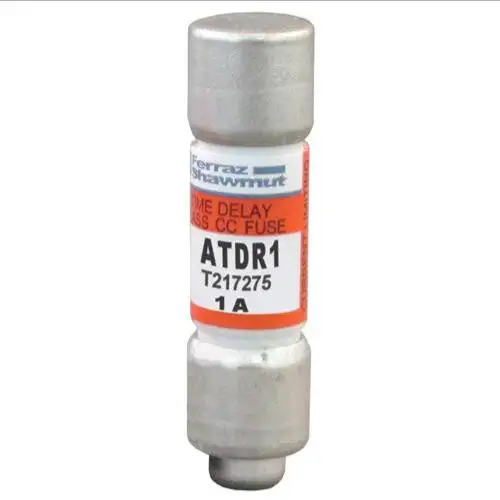Mersen Ferraz ATDR2 fuse is used in electrical circuits to provide precise time-delay protection against overcurrent conditions, ensuring the uninterrupted operation of sensitive machinery and equipment. This fuse is used in small motors, contactors, lighting, heating & general loads and branch circuit protectors.
Features:
- This fuse features a time delay to accommodate motor starting inrush currents and has improved cycling ability for frequent motor starts / stops without nuisance fuse opening.
- This fuse offers the high current limiting capability for low peak let-thru current.
- It offers a rejection-style design to prevent replacement errors when used with recommended fuse blocks.
- This fuse offers fibreglass body that provides dimensional stability in harsh industrial settings.
- It has a high-grade silica filler to ensure fast arc quenching and optimum current limitation.
Frequently Asked Questions:
Q. Does the ATDR2 Fuse come with any safety or identification features?
A. Yes, it features a high-visibility orange label for easy recognition and the metal-embossed date and catalogue numbers for traceability and lasting identification.
Q. What safety precautions should I take when installing or replacing the ATDR2 Fuse?
A.
- De-energise the circuit by turning off the power supply and verifying its status.
- Follow lockout / tagout procedures to prevent accidental power restoration.
- Confirm you have the correct replacement fuse with the right ratings.
- Visually inspect the fuse holder or block for damage or wear before installation.
- Safely discharge capacitors to prevent electrical shocks.
- Adhere to the manufacturer's installation and replacement guidelines.
- Allow equipment to cool down if it was recently in operation.
- Use a torque wrench or recommended torque values when securing the fuse.
- Ensure the circuit is not overloaded and address underlying issues causing repeated fuse blows.
- Inspect wiring for damage or wear while working on the circuit.
- Have a suitable fire extinguisher for electrical fires nearby.
Q. What is the difference between a time-delay fuse and a fast-acting fuse?
A. Time-delay fuse has a built-in delay to withstand temporary current surges, ensuring equipment starts smoothly, while fast-acting fuses respond immediately to overcurrents, providing rapid protection against short circuits and overloads.
 Change Country
Change Country


 In Stock : 535 Units
In Stock : 535 Units
